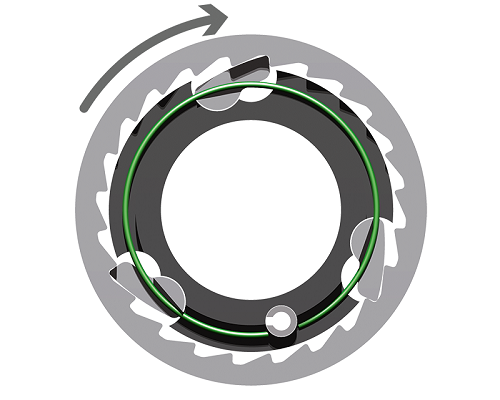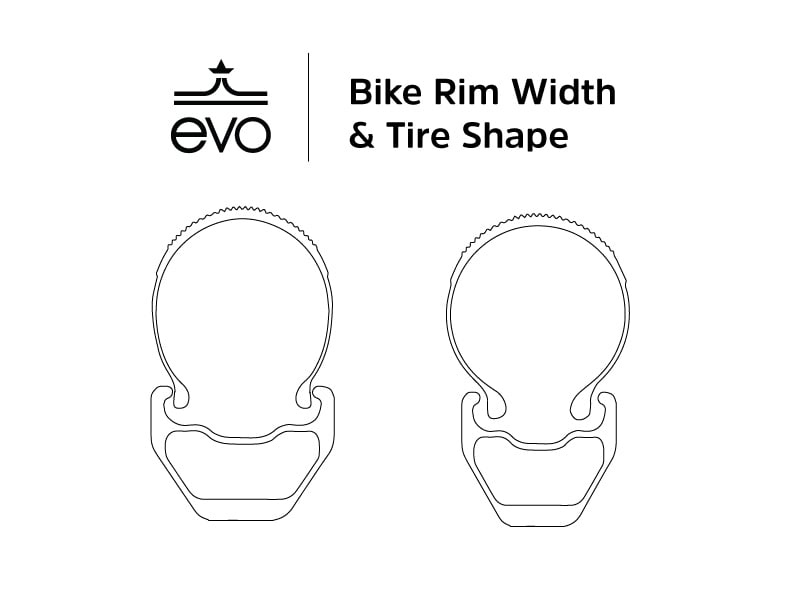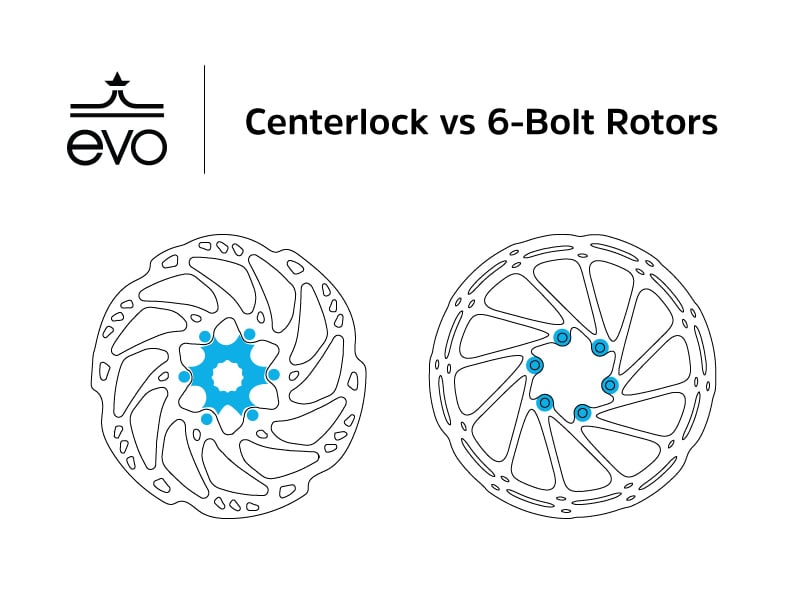How to Choose Bike Wheels, Rims, Hubs & Spokes
Bike wheels are simple right? There’s two of them, they’re round, they go in circles and let you go places, not much to talk about there. The world of bike wheels can get complicated quickly though. There are a whole bunch of technical terms, different standards, high-tech materials, and technical jargon that make the simple process of picking new wheels for your bike a potentially tricky task.
Amid all that noise, there are a few fundamental terms and features that have the biggest impacts on how your wheels perform, how much they weigh, and how long they last. So if you’re looking for a new pair of wheels, for any bike, from your road whip to a downhill sled, we’ve put together this guide on how to choose bike wheels, rims, hubs, and spokes to help you decipher all the chatter. So dig in, figure out what features really matter the most to you, and then go have fun riding those new wheels, confident that you found a set that’s perfect for you.
Why Bike Wheel Weight Matters
All types of bike riders are interested in making their bikes as light as possible, without sacrificing durability. But wheels are an especially important place to save weight. That’s because they act as a rotating mass, so their inertia affects the bike’s ride quality even more. There’s an old saying that “an ounce off the wheels is worth a pound off the frame.” And in practice, that holds true. Lighter wheels help your bike accelerate more easily, they make it quicker, and more playful. It’s impossible not to feel the difference a lighter wheelset makes.

But weight is just one part of a triangle of attributes that you’re looking for. It must be balanced with durability, and stiffness. Generally, lighter wheels are less durable than heavier ones, unless you pay a premium for carbon wheels. And lighter wheels are often more flexible, so more aggressive riders will feel them flexing in hard corners, which is disconcerting. So, while weight shouldn’t be your first priority when shopping for new wheels, it’s an important factor to think about.
Bike Wheel Hub Spacing
One of the biggest controversies in modern mountain biking has to do with hub spacing. Hub spacing is simply the width of the hub of the wheel, as it fits into the frame or fork. Folks argue about the merits of different spacings, but the good news is, it doesn’t really matter if you’re just buying new wheels for a bike you already own. You just need to make sure you’re buying wheels with the same spacing that your frame and fork have. Make sure to check both, manufacturers will list frame spacing on their websites, and fork manufacturers will, too. If you bought your bike used, don’t assume the fork has the same spacing listed on the bike when it was new, it may have an aftermarket fork with different spacing, so it’s always good to double check.
In general, wider spaced frames and forks allow for stiffer wheels. The wider the spoke flanges are, the greater the bracing angle between spokes is, and the stronger and stiffer the wheels are. Here’s a chart of common axle spacings.
Common Bike Hub Spacing Standards
| Hub Spacing | Front Hub Spacing | Rear Hub Spacing |
| Road Spacing | 100mm | 130mm |
| Regular MTB Spacing | 100mm | 142mm |
| Boost MTB Spacing | 110mm | 148mm |
| Super Boost Spacing | 110mm | 157mm |
Most modern mountain bikes have boost spacing front and rear. Older frames with new forks will sometimes have a regular rear hub spacing, and a boost fork spacing. Super Boost used to only appear on Downhill bikes, but now some brands like Evil are using it across their entire lines because of the strength benefits. Don’t worry about arguments over Boost vs. Super Boost, just stick to whatever your frame currently has, and you’ll be just fine.
Bike Wheel Axle Types - Quick Release Skewer vs Through Axel
There are two main ways of attaching your wheels to your bike, through axles, and quick releases. Like hub spacing, it’s a good idea to just stick with whatever your bike currently has. That way you won’t have to buy new axles, or have any issues. It is possible to adapt some quick release frames to through-axle which makes them a little stiffer and more durable, so if that’s something you’re looking for, you can look into adaptors for your specific frameset.
Number of Bike Wheel or Rim Spokes
Unlike the first two factors, which are already pretty much decided if you already own your bike, you get to go wild when it comes to choosing the number of spokes in your wheels. While different brands sell a variety of wheels with different numbers of spokes, there are some fundamental rules when it comes to the effect of spoke number on the wheel.
Wheels with more spokes are usually stiffer and stronger than wheels with less spokes, all other things being equal. They’re also a little heavier. So what’s the point of going with less spokes? Well, wheels with fewer spokes are a little more aerodynamic, weigh less, and lighter riders will appreciate that they’re a little more compliant. On the downside, heavier aggressive riders are more likely to break wheels with less spokes. If you’re riding primarily smooth roads, you can get away with a lot less spokes per wheel than someone who is riding gnarly bike park laps. So take that into account. On your last wheelset, were you breaking spokes a lot? Could you feel the wheels flexing? If so, you may want to bump up to something with more spokes when given the choice.
How Bike Hubs Work & Bike Hub Points of Engagement
The Points of Engagement, or POE of a bike hub is something that manufacturers like to flout. It refers to how quickly the hub catches when you start to pedal. Hubs with more POE make it so your cranks have to rotate through less dead space before power is delivered to the back wheel. They help with efficiency and control. There are two main ways that hubs deliver those points of engagement: star ratchets, or pawls. Both have their unique strengths and weaknesses, but both ratchets and pawls do a good job of delivering power from your legs to the bike’s tire. The number of POE matters more than how those points are created.

Image Source: DT Swiss
So, in general, nicer, more expensive hubs will have more POE. That said, there are upgrade kits for some hubs, like those from DT Swiss that allow you to upgrade cheaper hubs to more POE for a reasonable price.
How much does hub engagement matter? Well, it really depends on what you’re riding. For road and gravel riders, it’s not a huge concern. Generally, you’re pedaling with a cadence, so your hubs are always engaged, and you’re not ratcheting and noticing that dead space as much. However, for mountain bikers who like climbing technical trails, the number of POE makes a huge difference. The more instant that power transmission is, the easier it is to clean that gnarly, rooted out climb.
However, for more gravity-oriented riders, who climb less, and are happy to take a chairlift or shuttle up, and walk more technical climbs, more POE can actually lead to slightly less sensitivity in the rear suspension, since chain tension affects how the rear end of the bike moves. So, if you’re an all-round rider, who wants to clear technical climbs, go for as many POE as you can afford. Otherwise, don’t worry too much about it.
Bike Rim Width
A big trend in recent years has been wider tires, with gravel tires getting up to the 50cc mark, and mountain bikers experimenting with 2.8” or 3.0” tires. To go with those tires, wheel manufacturers have come up with wider rims. Wheel manufacturers will often list two rim widths, inside, and outside. Inside rim width is the important measurement to focus on, since it affects where the tire’s bead sits, and what its shape will be when inflated.

You should always choose your rim width based on how wide of tires you’ll be running. Running wider tires, with narrow rims can make your tires feel too tall and mushy, the sidewalls are having to do more work than they should be, and the cornering knobs can’t engage as well. Similarly, running too narrow of tires on wider rims can lead to increased drag as the tire is squared off, and all the knobs contact the ground all of the time.
Here are some general guidelines for what mountain bike tire and rim width combos work well. Keep in mind, you can create combinations outside of these guidelines, and they might work fine, these are just a starting place.
Bike Rim Width to Tire Width
| Rim Width (Internal) | Tire Width |
| 17-23 mm | 25-28 cc |
| 21-26 mm | 28-50 cc |
| 20-25 mm | 2-2.25" |
| 23-27 mm | 2.25-2.5" |
| 27-35mm | 2.4-2.8" |
In general, the more gnarly and technical terrain you’ll be riding, the wider rim (and tire) you’ll want. Wider rims and tires weigh more, so if you’re looking for a quick combo for mellower trails, it’s a good idea to go narrower.
For more on tires, checkout our complete How to Choose MTB Tires guide.
Bike Rim Material - Aluminum vs Carbon Fiber Bike Wheels
Bike rims are made out of two main materials, aluminum and carbon. There are different alloys and construction techniques that can change specific ride qualities, but some general characteristics hold true for each material.
Aluminum rims are cheaper than Carbon ones. They are also usually a bit heavier. Carbon wheels are usually a little stiffer (which can be good or bad depending on what you’re looking for.)
Carbon wheels have a reputation for breaking more commonly than aluminum ones, but that’s unfounded. The reality is that each material has a different wear pattern. Aluminum rims bend and get dented easily. But it’s easy to true them back up, straighten them out, and keep riding. When they do break, you can usually anticipate that it’s coming since you’ve bent them a bunch of times.
In contrast, carbon wheels are much harder to bend. They stay true better, they don’t need to be adjusted as often, and they keep spinning smoothly through bigger hits. But, when carbon does fail, it doesn’t give you a warning. So, while you may be able to bend a ruined aluminum rim back, and finish a ride, you’re going to be walking out with carbon. That said, carbon wheels generally require a lot more force to break catastrophically than aluminum ones. And carbon wheel brands are working against that reputation for failure, so many offer lifetime warranties which aren’t available for aluminum.
Bike Spoke Types - J Bend vs Straight Pull
There are two main types of spokes, J Bend, and Straight Pull. Most manufacturers use J Bend spokes because they’re more affordable, and easier to tune and replace. Straight Pull spokes are slightly less likely to break close to the hub, but are harder to true and replace. Most people just choose J Bend because they’re available at most shops, if you need an emergency replacement. Both styles perform just fine, and it doesn’t really matter that much which you choose.
Bike Disc Brake Rotor Types - 6-Bolt vs Centerlock
If you have disc brakes, your hubs will either be set up for centerlock, or 6 Bolt brake rotors. Centerlock rotors are quicker to install, you just need to thread one nut over the rotor, but you need a special tool to do this, and centerlock rotors often end up with a little play. On the other hand, 6 Bolt rotors require you to install 6 T25 hex bolts per wheel to hold the rotor. They don’t require any special tools, but they take longer to swap. It is possible to adapt Centerlock hubs to 6 Bolt rotors, but you can’t go the other way. Most folks prefer 6 bolt hubs, but if the wheels you want only come in Centerlock, don’t worry, it’s not a big deal.

Learn More With Our Other Bike Guides:
How to Choose a Mountain Bike
Mountain Bike Sizing and Fit Guide
How to Get Started Mountain Biking
How to Choose a Mountain Bike Wheel Size
Mountain Bike Suspension Basics
Women's Mountain Bike Buyer's Guide
How To Get Started Gravel Biking
Electric Mountain Bike Buyer's Guide
Classes of eBikes
Travel Guides - Where to Mountain Bike
Travel Guides - Where to Ride eBikes
Mountain Bike Cockpit Setup & Seat Height
How to Choose a Mountain Bike Dropper Post
How to Choose Mountain Bike Tires
How to Choose Mountain Bike Handlebars
How to Choose Mountain Bike Pedals
How to Choose Clipless Pedals, Shoes & Cleats
How to Choose a Bike Seat / Saddle
Women's Mountain Bike Gear & Clothing Guide
How to Choose MTB Knee Pads
Bike Helmet Size & Fit Guide
How to Choose Bike Shoes
Shimano Groupset Hierarchy Explained
SRAM Groupset Hierarchy Explained
SRAM vs Shimano Groupsets Compared
What to Bring Mountain Biking
What to Wear Mountain Biking
Mountain Bike Tire Pressure Guide
Mountain Bike Maintenance Schedule
How to Clean a Mountain Bike
How to Change Bike Pedals
How to Bleed SRAM Brakes
How to Bleed Shimano Brakes
How to Convert to Tubeless Tires
How to Replace Internal Cable Housing
How to Adjust Your Rear Derailleur
How to Replace a Bike Chain
How to Fix Bike Creaks & Noises